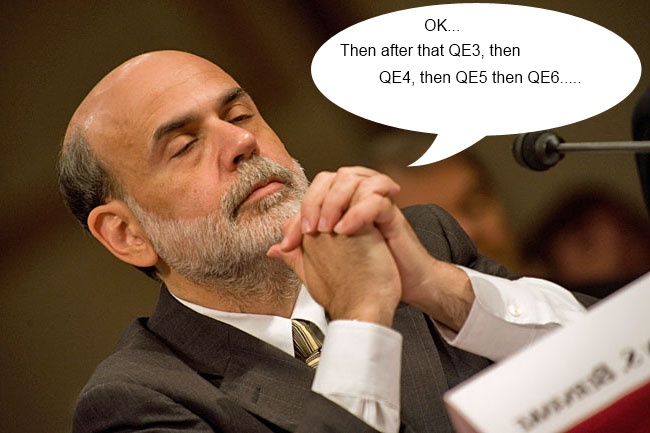

| Visitors Now: | |
| Total Visits: | |
| Total Stories: |

| Story Views | |
| Now: | |
| Last Hour: | |
| Last 24 Hours: | |
| Total: | |
Why QE3 Is Coming Next Week
Since the Jackson Hole Symposium, I’ve been thinking it is very likely that so-called “QE3″ would be announced at the next FOMC meeting (Sept 12th and 13th). And after thinking about Columbia University professor Michael Woodford’s paper presented at Jackson Hole, I think this round of asset purchases might be more effective than most people expect.
Notes: QE3 is shorthand for another Large Scale Asset Purchases (LSAP) program. “QE” is monetary policy, not fiscal policy (not spending).
Yesterday, Goldman Sach economist Sven Jari Stehn beat me to the punch. He wrote:
[W]e expect the Federal Open Market Committee (FOMC) to announce a return to asset purchases as well as a lengthening of the FOMC’s forward guidance for the first hike in the funds rate to mid-2015 or beyond at the September 12-13 FOMC meeting. Our baseline forecast is an open-ended purchase program, focused on agency mortgage-backed securities.
[O]ur “double punch” Fed call relates to the much-discussed study presented by Columbia University professor Michael Woodford at Jackson Hole last Friday. Woodford argues that forward guidance is a powerful tool both in theory and practice. But in his view the effect of asset purchases is largely confined to their role in conveying guidance about future monetary policy actions. …
We fully agree with Woodford’s view that such aggressive guidance measures could be a powerful tool. However, we also believe that Fed officials are unlikely to adopt them anytime soon.
Fortunately, we are somewhat more optimistic than Woodford with regard to the impact of Fed asset purchases. … we believe that a more moderate strengthening of the forward guidance coupled with renewed asset purchases could provide a decent amount of monetary easing next week.
I’d like to add a few points:



